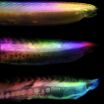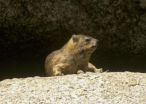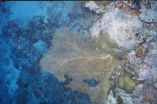(Press-News.org) An innovative experiment at the University of Leicester that involved studying rotting fish has helped to create a clearer picture of what our early ancestors would have looked like.
The scientists wanted to examine the decaying process in order to understand the decomposition of soft-body parts in fish. This in turn will help them reconstruct an image of creatures that existed 500 million years ago.
Their findings have been published today, Wednesday 13th October, in the journal Proceedings of the Royal Society B. The work was funded by the Natural Environment Research Council (NERC).
The researchers, from the Department of Geology at the University of Leicester, studied the way primitive fish, such as hagfishes and lampreys, decompose to gain an impression of our early ancestry.
The team at Leicester (Rob Sansom, Sarah Gabbott and Mark Purnell) explain: "Our earliest fish-like relatives left fossil remains which have the potential to show us how the group to which we belong evolved from worm-like relatives. But there is a major problem – people are familiar with bones, and teeth as fossils but do not perhaps realise that before these inventions our ancestors consisted of entirely soft bodied creatures. Eyes, organs, guts and muscles all decompose very quickly after death, and as any forensic scientist knows recognising rotted anatomy is difficult.
"Fossils from 500 million years ago provide our only direct evidence of how our earliest vertebrate ancestors evolved from the simple worm-like animals".
The fossils from the early phase of vertebrate evolution are very rare because being completely soft-bodied they normally rotted away completely after death leaving nothing behind. But very occasionally their remains became preserved as fossils giving us a tantalising glimpse of our early vertebrate relatives.
However, as Rob Sansom explains correctly reading and reconstructing what our ancestors looked like from these semi-rotted remains is tricky. "Interpreting half-a-billion year old fossils is challenging enough in itself, but even more so when the remains comprise only the decayed soft parts which may look quite different to how they would have done in life".
Sarah Gabbott, one of the leaders of the study, admits that at first it may be difficult to see why spending hundreds of hours studying the stinking carcasses of rotting fish helps us to unlock our evolutionary history, but she points out that the results have been critical to correctly reading fossils from this phase in our history. "In a way our experiments are similar to those going on at the infamous 'body farms' in the USA, where human cadavers are left to decompose so that forensic scientists can determine time and cause of death. But, as palaeontologists we want to uncover what an animal which lived 500 million years ago looked like before it died".
"Our macabre experiments are grisly and smelly but they have revealed, for the first time, what characteristic vertebrate features look like when they are partially decomposed".
Rare fossilized fish-like fossils are recognised as being part of our evolutionary history because they possess characteristic anatomical features, such as a tail, eyes and the precursor of a backbone. Mark Purnell, explains further: "our experiments have provided us with a set of photofit-like images allowing us to decipher and correctly identify features in fossils. Our ability to flesh out what our earliest vertebrate ancestors looked like and correctly place them on the Tree of Life is critical to understanding whether our earliest relatives evolved in a burst of complexity or gradually over millions of years"
The results published today in The Proceedings of the Royal Society B, show that some of the characteristic anatomical features of early vertebrate fossils have been badly affected by decomposition, and in some cases may have rotted away completely. Knowing how decomposition affected the fossils means our reconstructions of our earliest ancestors will be more scientifically accurate.
INFORMATION:
Notes to editors
Images available from University of Leicester Press Office via pt91@le.ac.uk
Rotten experiments help to create picture of our early ancestors
How can watching primitive fish rot away reveal answers to the fundamental questions of how, when and why our earliest vertebrate ancestors evolved?
2010-10-13
ELSE PRESS RELEASES FROM THIS DATE:
Traditional health practices popular among older people who choose not to have flu vaccine
2010-10-13
Eating steamed pears, having a soothing massage or bathing in a herbal mixture are just some of indigenous health practices used by older people to ward off or treat influenza, according to research published in the October issue of the Journal of Advanced Nursing.
Other traditional measures discovered by nurse researchers at the Hong Kong Polytechnic University included being rubbed with a coin, eating cheese, yoghurt and honey and having warm drinks made with ginger or lemon.
The team surveyed nine countries to find out why so many of them were failing to meet the ...
Benefits of planting winter canola examined
2010-10-13
Winter canola might soon be the crop of choice for Pacific Northwest farmers, thanks to research by U.S. Department of Agriculture (USDA) scientists and their partners. The multitasking annual plant can be used to control weeds, supplement animal feed, produce biodiesel--and spark a new revenue stream for the Colville Confederated Tribes.
Frank Young, an agronomist with USDA's Agricultural Research Service (ARS), was part of a team that evaluated production protocols for winter canola in the Pacific Northwest. ARS is USDA's principal intramural scientific research agency. ...
Ancient animal urine provides insight into climate change
2010-10-13
Scientists at the University of Leicester are using an unusual resource to investigate ancient climates– prehistoric animal urine.
The animal in question is the rock hyrax, a common species in countries such as Namibia and Botswana. They look like large guinea pigs but are actually related to the elephant. Hyraxes use specific locations as communal toilets, some of which have been used by generations of animals for thousands of years. The urine crystallises and builds up in stratified accumulations known as 'middens', providing a previously untapped resource for studying ...
Measurement scientists set a new standard in 3-D ears
2010-10-13
Scientists at the UK's National Physical Laboratory (NPL) have developed a means of representing a 3D model ear, to help redefine the standard for a pinna simulator (the pinna is the outer part of the ear) – used to measure sound in the way we perceive it.
The nature of human hearing is heavily dependent on the shape of the head and torso, and their interaction with sound reaching the ears allows for the perception of location within a 3D sound field.
Head and Torso Simulators (HATS) are designed to model this behaviour, enabling measurements and recordings to be made ...
Percolating a solution to hexavalent chromium
2010-10-13
The metal chromium is an essential nutrient for plant and animal metabolism, but it can accumulate to toxic and hazardous levels in the environment when discharged in industrial waste water; a point made infamous by the movie Erin Brockovich.
Chromium-contaminated wastewaters usually originate from dye and pigment manufacturing, wood preserving, electroplating and leather tanning. The element can exist in water as charged particles in one of two states, oxidation state 3+ (trivalent form) and 6+ (the hexavalent form usually exists as chromate or dichromate). Other oxidation ...
Even women with a family history can control breast cancer risk
2010-10-13
Having a family history of breast cancer can lead some women to wonder if the risk is out of their control. However, a study of more than 85,000 postmenopausal women, published in BioMed Central's open access journal Breast Cancer Research, observed that regular physical activity, maintaining a healthy weight, and drinking less alcohol lowers breast cancer risk for those with and without a family history of the disease.
The University of Rochester Medical Center study is good news for women who have a close relative with breast cancer and fear that no matter what they ...
Giant star goes supernova -- and is smothered by its own dust
2010-10-13
COLUMBUS, Ohio -- A giant star in a faraway galaxy recently ended its life with a dust-shrouded whimper instead of the more typical bang.
Ohio State University researchers suspect that this odd event -- the first one of its kind ever viewed by astronomers – was more common early in the universe.
It also hints at what we would see if the brightest star system in our galaxy became a supernova.
In a paper published online in the Astrophysical Journal, Christopher Kochanek, a professor of astronomy at Ohio State, and his colleagues describe how the supernova appeared ...
Personal genetic profiling services lack evidence for claims
2010-10-13
Direct-to-consumer personal genetic profiling services that claim to predict people's health risks by analysing their DNA are often inconclusive and companies that sell them should provide better information about the evidence on which the results are based, says the UK Nuffield Council on Bioethics, in a new report on the ethics of so-called personalised healthcare services.
The report says that claims that these services are leading to a new era of 'personalised healthcare' are overstated and should be treated with caution. The Council recommends that regulators of ...
Coral records show ocean thermocline rise with global warming
2010-10-13
COLUMBUS, Ohio – Researchers looking at corals in the western tropical Pacific Ocean have found records linking a profound shift in the depth of the division between warm surface water and colder, deeper water traceable to recent global warming.
The finding is the first real evidence supporting what climate modelers have been predicting as the effects of global climate change on the subsurface ocean circulation.
The report by researchers from Ohio State University and the University of Toronto was published in the latest online edition of the journal Geophysical Research ...
sonRAIL -- computer model to calculate noise levels along the Swiss rail network
2010-10-13
Goods trains move at night because during daytime the Swiss rail system is used to full capacity by passenger traffic. Unfortunately, it is goods trains which make the most noise – and they operate at exactly the time when most people want to sleep. If the policy of shifting goods transport from the roads to the rail network is to succeed, then goods trains must be made significantly quieter.
The Swiss Federal Office for the Environment (FOEN) therefore tasked a team of scientists, headed by Kurt Eggenschwiler of Empa's Acoustics and Noise Control Laboratory, with the ...
LAST 30 PRESS RELEASES:
JULAC and Taylor & Francis sign open access agreement to boost the impact of Hong Kong research
Protecting older male athletes’ heart health
KAIST proposes AI-driven strategy to solve long-standing mystery of gene function
Eye for trouble: Automated counting for chromosome issues under the microscope
The vast majority of US rivers lack any protections from human activities, new research finds
Ultrasound-responsive in situ antigen "nanocatchers" open a new paradigm for personalized tumor immunotherapy
Environmental “superbugs” in our rivers and soils: new one health review warns of growing antimicrobial resistance crisis
Triple threat in greenhouse farming: how heavy metals, microplastics, and antibiotic resistance genes unite to challenge sustainable food production
Earthworms turn manure into a powerful tool against antibiotic resistance
AI turns water into an early warning network for hidden biological pollutants
Hidden hotspots on “green” plastics: biodegradable and conventional plastics shape very different antibiotic resistance risks in river microbiomes
Engineered biochar enzyme system clears toxic phenolic acids and restores pepper seed germination in continuous cropping soils
Retail therapy fail? Online shopping linked to stress, says study
How well-meaning allies can increase stress for marginalized people
Commercially viable biomanufacturing: designer yeast turns sugar into lucrative chemical 3-HP
Control valve discovered in gut’s plumbing system
George Mason University leads phase 2 clinical trial for pill to help maintain weight loss after GLP-1s
Hop to it: research from Shedd Aquarium tracks conch movement to set new conservation guidance
Weight loss drugs and bariatric surgery improve the body’s fat ‘balance:’ study
The Age of Fishes began with mass death
TB harnesses part of immune defense system to cause infection
Important new source of oxidation in the atmosphere found
A tug-of-war explains a decades-old question about how bacteria swim
Strengthened immune defense against cancer
Engineering the development of the pancreas
The Journal of Nuclear Medicine ahead-of-print tip sheet: Jan. 9, 2026
Mount Sinai researchers help create largest immune cell atlas of bone marrow in multiple myeloma patients
Why it is so hard to get started on an unpleasant task: Scientists identify a “motivation brake”
Body composition changes after bariatric surgery or treatment with GLP-1 receptor agonists
Targeted regulation of abortion providers laws and pregnancies conceived through fertility treatment
[Press-News.org] Rotten experiments help to create picture of our early ancestorsHow can watching primitive fish rot away reveal answers to the fundamental questions of how, when and why our earliest vertebrate ancestors evolved?




